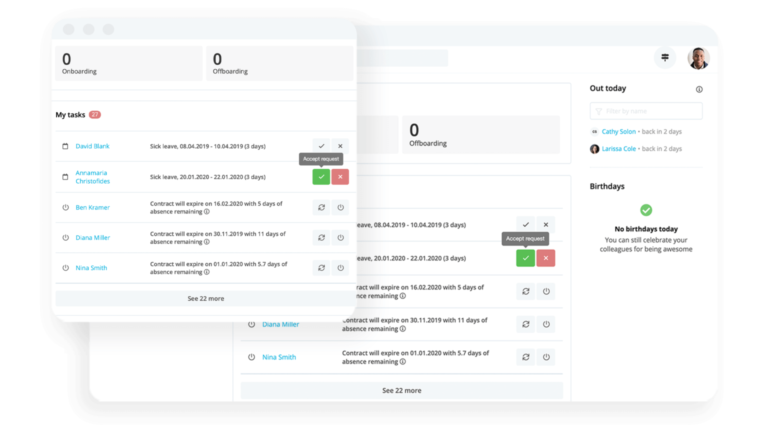How To Set Up Your Peer Mentoring Programme

In this article, we aim to provide a comprehensive guide to peer mentoring. This guide details what it is, how it can benefit your organisation and offers details on how to set up a peer mentorship programme.
Key Facts
Mentors provide an excellent source of information for new employees and those switching careers.
A developed mentorship programme can foster a more collaborative work environment.
Deciding what you want to accomplish with your mentorship programme can help you find the best mentors to join it.
What Is Peer Mentoring?
Peer mentorship is a relationship between employees of the same age or career where the more experienced staff member offers support, advice and guidance to someone newly entering the field. A peer mentor provides easy access to job knowledge and the skills necessary to complete the typical responsibilities.
Overall, peer mentoring can be done in a group setting or one-on-one.
Benefits of Peer Mentoring
Implementing a peer mentoring programme can produce several valuable benefits for your employees and the organisation as a whole. Some of the advantages you can get from this system are the following:
Knowledge Transfer: The more experienced staff members can pass down vital job knowledge necessary for new hires to perform their responsibilities. This real-life experience prepares new hires in ways a classroom cannot.
Improved Employee Relationships: Mentor networks and peer relationships build trust. This creates a valuable support system in which employees company-wide learn to work together.
Higher Attraction to Job Seekers: Robust training in a new job helps draw in potential candidates who may be nervous about stepping into a new role. It’s also a significant benefit for employees who want to learn from those who came before them.
More Collaborative Work Environment: Peer mentorship encourages colleagues to help each other, creating a cooperative climate around the workplace. These bonds further strengthen a workplace and improve work output.
Fewer Mistakes: New hires learn all the vital information about their position first-hand, so they make fewer mistakes during their first days on the job.
Peer Mentor Responsibilities
In broad strokes, looking out for less experienced employees is a peer mentor’s job. In more detail, some of a mentor’s responsibilities include:
Sharing Their Knowledge: One of a mentor’s most important tasks is teaching the mentee the knowledge and skills they’ll need to perform their tasks well. They also share miscellaneous information about the organisation to build a positive relationship. This can be done formally through structured meetings and informally with drop-ins and casual lunches together.
Providing Emotional Support: Mentors help ensure that their mentees have a safe place to ask questions and explore tough emotions that may arise due to work. Peer mentoring is an excellent way for mentees to learn how to navigate these tough situations.
Serving as a Positive Role Model: Good mentors use positive reinforcement to demonstrate the professional behaviours expected within your organisation. This reduces the chance of employees developing bad habits.
Teaching Positive Communication Skills: Interacting with a friendly peer mentor helps the less experienced employee grow comfortable with other peers. Mentors can make introductions to other co-workers, while mentees can practise their conversational and communication skills in a safe environment.
Encouraging New Hires: The mentor supports new hires in their initial days of employment. This can take the form of encouragement, friendly advice or material support, among other ways.
Personio: HR Processes That Bolster Employee Experience

All your HR processes, in one place, to help your employees find success and your HR department find time for strategy. Learn more about how Personio’s holistic HR software can help your organization today.
How It WorksHow To Set up a Peer Mentoring Programme
Below are the steps you’ll need to take to set up a successful peer mentoring programme.
Define Your Goals
The first step is deciding what your organisation wants – and needs – from the peer mentoring programme. Is it meant to help retrain a department within your company after restructuring operations? Do you want to increase employee retention and entice new candidates to apply? Whatever your reason, it will charter the course for the rest of the programme as it develops.
Plan Ahead
After defining your objective, you need to determine the development areas that need to be trained to reach that goal. These development areas could be identified and organised by department, by skill, by experience, by professional background or by career goal, to name a few. This will also help you pick out the best employees to act as mentors for the programme.
Set up Some Ground Rules
Next, establish a structure for the programme so that the participants understand what’s expected of them. Consider how you’ll pair mentors with their mentees, whether they’ll meet in person or over video, whether mentors can only be paired with peers within their department, and other things of that nature that define the programme’s framework.
Raise Awareness
Use company-wide emails or employee message boards to publicise the service to interested employees. Ensure advertisements include instructions on how people can get involved as mentors and mentees.
Measurement and Evaluation
Use key performance indicators (KPIs) or gather feedback from participants to determine your programme’s success. Ask your employees how it has affected company culture and employee relationships over time. Use this process to identify areas that need fine-tuning as well, so your programme can benefit more employees over time.
Examples of Peer Mentoring
Here are a few examples of what peer mentoring looks like in practice within the workplace.
Peer Mentoring for Collaboration
An experienced employee will already know many of the people within their department. They can serve as a bridge between new hires and the rest of the team. The newer employees learn everyone’s roles and where they fit into the process, while the mentor is ready to help them adjust to the team’s rhythm.
Peer Mentoring for Knowledge Sharing
An employee guide can teach new hires the basic responsibilities of the job, but mentors can describe the hidden difficulties of the position in-depth. New hires can learn how to handle obstacles that other training programmes may have yet to prepare them for.
Peer Mentoring for Positive Behaviours
Ideally, mentors will be employees who model values that your organisation advocates. The relationship that forms between mentor and mentee can encourage the newer employee to model those positive behaviours to get the most success within their role.
Frequently Asked Questions About Peer Mentoring
What Is Peer Mentoring?
Peer mentoring is when an experienced employee takes less experienced ones under their wing and supports them within the workplace.
What Is the Purpose of Peer Mentoring?
Peer mentorship is meant to pass on knowledge, necessary skills and positive behaviours to newer workers to help them become more productive faster.
What Are the Qualities of a Good Peer Mentor?
A good peer mentor brings several qualities and skills to the table, including:
Good listening skills
A non-judgmental outlook
Honesty and integrity
Good communication skills
What Are the Key Peer Mentoring Benefits?
The key advantages of a peer mentoring programme are:
Peer mentoring transforms the knowledge necessary to perform well at a job to those entering the field for the first time, whether as new employees or as someone changing careers.
It can create a more inclusive and collaborative work environment by building relationships company-wide and modelling healthy, positive work relationships for newcomers.
It can draw in job seekers who are looking for a supportive organisation, especially when marketed as part of the benefits package offered at an organisation.
How Do You Set up a Peer Mentoring Programme for Your Organisation?
To set up a peer mentoring programme for your company to benefit from, you have to:
Set a goal for the mentorship programme to build around.
Make a plan to reach the goals you set for the programme.
Structure how mentors and mentees will interact with each other.
Advertise the programme to get people interested in participating.
Collect feedback on the programme to see how well it works and where it needs improvement.
Support Your Peer Mentorship Programme With Personio
A peer mentoring programme can only be so effective without the tools needed to track its success and see its effectiveness. Personio can provide those tools with its performance feature that helps you keep tabs on employee performance and request feedback through one programme. Book your free demo and learn how else Personio can help your organisation.
Disclaimer
We would like to inform you that the contents of our website (including any legal contributions) are for non-binding informational purposes only and does not in any way constitute legal advice. The content of this information cannot and is not intended to replace individual and binding legal advice from e.g. a lawyer that addresses your specific situation. In this respect, all information provided is without guarantee of correctness, completeness and up-to-dateness.

